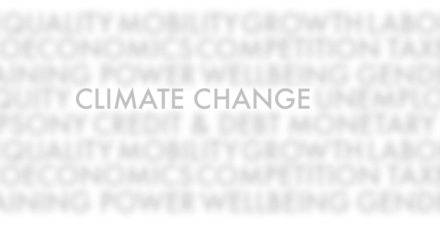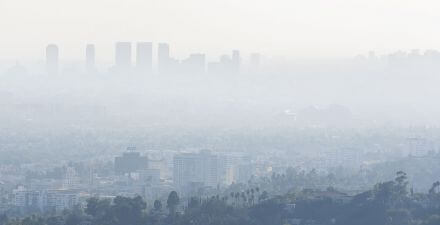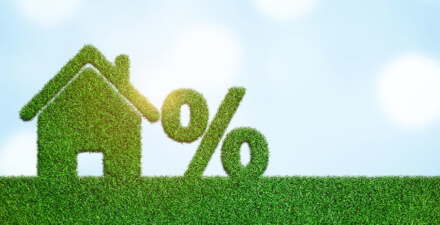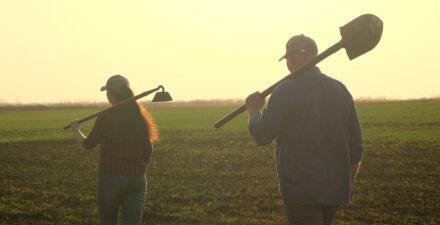Mitigating the impact of wildfires on homes is critical to improving U.S. economic outcomes
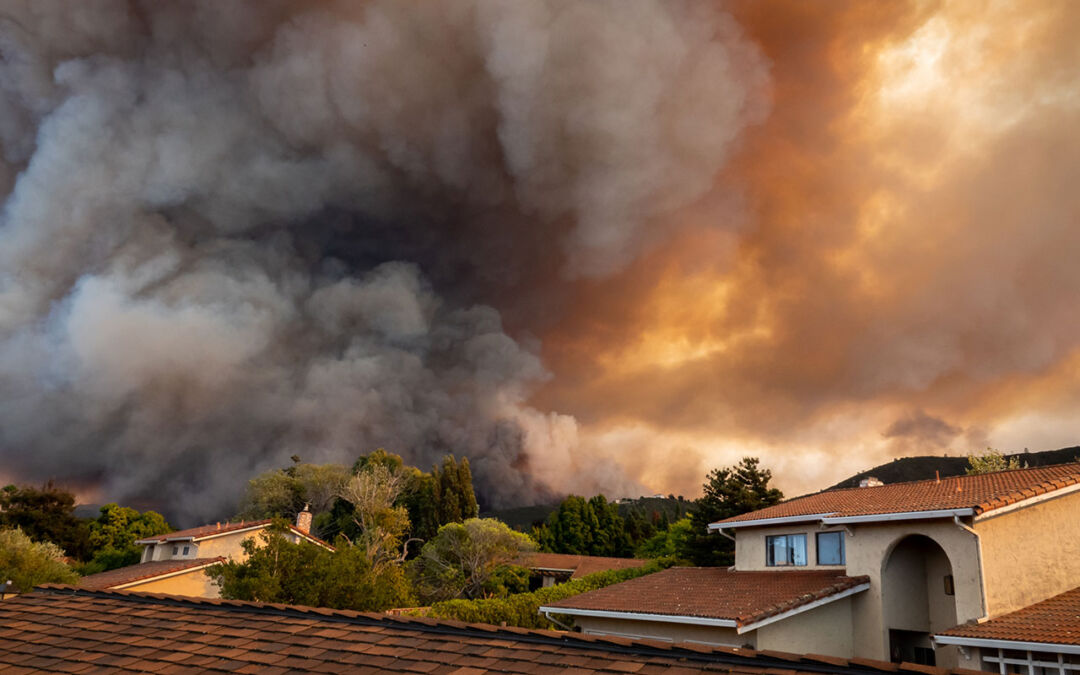
The harmful consequences of climate change are broad, from extreme weather events making locations uninhabitable to increased temperatures delivering larger and more frequent downstream damages, such as drought and increased hurricanes. These effects are already imposing serious economic costs and limiting economic growth in the United States and around the globe.
A telling barometer for the consequences of climate change are wildfires. Global warming is increasing both the frequency and the size of wildfires, both of which take a direct human toll due to their rising destructive force and their damaging impact on economic growth and prosperity.
The effects of these wildfires are far-reaching and long-lasting. These include local homes and small businesses being consumed in smoke and flames, as well as cities and counties being forced to shift economic priorities from growth and development to fire suppression and infrastructure restoration. Evidence suggests that, of an estimated $500 billion in new costs, people of color and other historically disadvantaged groups are disproportionately affected by these crises.
The persistent threat facing fire-prone states needs to be addressed. Some of the downstream macroeconomic effects of increased heat within the continental United States are relatively well-understood, such as the cost of drought on agricultural production and the immediate costs of residential home damage resulting from increased wildfires. There also is a notable amount of well-informed research regarding the social costs of wildfires in their aftermath.
But there is still much to learn regarding the economic impacts of wildfires. This issue brief reviews the scope and intensity of economic risks imposed by droughts that exacerbate wildfires and the direct costs to housing and businesses of wildfires, and then details on how wildfire suppression and mitigation efforts are worthwhile investments that must be undertaken carefully based on well-informed research, so that equitable U.S. economic growth in fire-prone states is strong and sustainable.
Wildfires and drought
The downstream effects of rising heat continue to affect the United States. Since the 1980s, the nation has experienced 26 droughts. Drought, combined with hot weather, strong winds, and exceptionally dry vegetation, result in very active fire behavior.
In 2021, for instance, California experienced its 11th-driest year on record, breaking more than 1,500 daily high temperature records. This combination of weather forces led to an intense wildfire season. Consider the Dixie Fire. It started on July 13, 2021, burned on the Plumas National Forest, Lassen National Forest, Lassen Volcanic National Park, and across five Northern California counties: Butte, Lassen, Plumas, Shasta, and Tehama. Then, the Fly Fire started on July 22 and was managed under the Dixie Fire East Zone command as the two fires eventually merged into one.
California is not alone in its battle against the effects of rising temperatures. Several Western states are currently experiencing record-breaking levels of drought. Temperature increases continue to result in states, including Idaho and Wyoming, receiving minimal amounts of rainfall.
Consequently, these extended periods of drought increase the supply of dry lumber and dead vegetation, which serve as prime fuel for wildfires.
Economic costs to housing markets due to wildfires
Each year, as populations grow, individuals move farther into fire-prone lands. As new residential developments continue to urbanize fire-prone land, the risk of fire damage rises. These trends may have been accelerated by the COVID-19 pandemic, which led to many U.S. workers and their families migrating from traditionally dense metropolitan areas to less populated rural localities, such as those in Idaho and Arizona.
Conversely, the resulting population influx due to the pandemic may also be a contributing factor to increased wildfire risk. As homebuyers continue to expand into what the U.S. Fire Administration calls the“wildland urban interface”—inhabited lands that are known to have wildfires—these households also find themselves experiencing significantly higher levels of wildfire risk due to the surrounding vegetation being highly ignitable.
New research looks at the effects of wildfires on residential house prices. The study, by Nancy Wallace, Paulo Issler, and Richard Stanton at the University of California, Berkeley’s Haas School of Business and Carles Vergara-Alert of IESE Business School, features an empirical analysis using high-frequency geospatial data from ATTOM Data Solutions, a leading provider of nationwide property data. The study estimates both the wildfire exposure of residential single-family homes and determines the long- and short-run effects of these fires on insured properties. The main purpose of this work is to inform the current policy debate concerning residential fire-insurance regulation in California.
The study was conducted using two differing analytical strategies to understand how wildfires impact housing market dynamics. First, Wallace and her co-authors estimate the probability of wildfires in California to assess whether it is possible to estimate the actuarial risk of urban wildfires. Second, the researchers use a difference-in-difference methodology, which estimates how an event such as a wildfire shapes relevant variables for housing prices, to see whether there are there changes in housing quality and prices after large urban wildfires, whether there are changes in income and wealth after urban wildfires, and if there is a significant increase in mortgage defaults after an urban wildfire.
Wallace and her co-authors find that they can estimate the actuarial risk of urban wildfires. To date, their research finds a total of $265.6 billion worth of property currently at risk of wildfire damage. The researchers then estimate a back-of-the-envelope assessment of potential costs associated with wildfire risk. They use the previously described empirical estimates to test for the long-run post-fire effects between areas that had wildfires and the treatment group that consisted of homes in a wildland urban interface beyond the immediate risk of fire.
They find that there is a 2.1 percent increase in home prices within the treatment group—housing units within the fire radius 5 years after a wildfire event—versus homes outside of the treatment group. Results also show an income increase of 5.25 percent for workers residing within the treatment group after the same 5-year window following a fire, compared to 4.2 percent residing outside the treatment group. The upshot: This economic consequence of spreading wildfires will impact housing prices and family incomes in these new wildland urban interfaces.
The four co-authors of the new research also find potential signs of gentrification following fire damage. They find that home prices rebound to pre-fire rates just 2 years after wildfires. This rebound in property values keeps the prices of houses in wildland urban interface areas out of reach for less fortunate families looking to relocate. This means households that may have been able to previously afford a home in an area prone to wildfires may begin to experience difficulty relocating as property values continue to rise.
The co-authors, however, ultimately find that the size of wildfires is positively correlated with rising mortgage delinquency rates, which can cause prolonged financial hardship for low-income and low-wealth households in fire-prone areas. They hypothesize that these impacts may be due to a belief by homeowners that they will receive government assistance when there is a larger-than-average fire, and they may be missing their mortgage payments when less federal assistance is forthcoming.
Policy solutions to ensure fire safety and avoid the economic costs associated with wildfires
As policymakers attempt to understand both the costs and solutions for the economic damages of wildfires, a new paper by Patrick Baylis of the University of British Columbia and Judson Boomhower of the University of California, San Diego evaluates the effect of California’s wildfire building codes on the survival of a single property and it’s neighboring structures. Ultimately the paper seeks to uncover just how governments should go about supporting adaptation to worsening fire catastrophes through policies that mitigate some of the costliest outcomes.
The research examines the policy effectiveness of voluntary adaptation of fire prevention measures in buildings, relative to that of mandatory adaptations already included in building codes. To examine this, the researchers combine data from the CAL FIRE Damage Inspection, or DINS database, with property tax assessment data from the Zillow ZTRAX database for the years 2003 to 2020. Using a difference-in-difference fixed regression model, Baylis and Boomhower assess the effect of mandatory adaptations versus a counterfactual of voluntary building codes.
To do so, the analysis leverages a change in building-code policies following a deadly firestorm in Oakland, California in 1991, which resulted in a wave of mandated fire prevention building codes that led to California boasting some of the strictest fire-safety code measures in the country. This analysis was done using a counterfactual group of homes that predated the 1991 and 2008 building code mandates implemented in California. As such, the control group consisted of the same homes after the fire-prevention mandates were enacted.
The results of their study show the spillover benefits of mandated building codes on neighboring structures within 10 meters of one’s own space. The findings show that the benefit of having a retrofitted home that follows mandated building codes not only helps reduce the risk of exponential damage to the home by 40 percent, but also reduces the likelihood that neighboring homes experience catastrophic damage by 6 percent. This benefit is even stronger when several of the homes in the neighborhood are also retrofitted.
The resulting net-benefit calculations suggest that wildfire building codes yield unambiguous benefits in the most fire-prone areas of California, especially when homes are clustered closely together such that there are large risk spillovers. These findings suggest that mandated building codes should be a consideration to policymakers looking to curb rising wildfire risk.
Conclusion
Investing in climate change mitigation is an important long-term economic policy priority, and investing in wildfire mitigation is a critical immediate priority.Traditionally, when wildfires erupt, the most pressing issues are suppression and safety. Once managed, local governments are then able to focus on rebuilding and recovering the economic loss. The question is, should fire-prone localities focus on rebuilding or should they avoid building homes in high-risk areas altogether?
Climate models, regardless of carbon emission output, agree on increased durations of very hot days—more days with temperatures of 90 degrees Fahrenheit and above. This means that the present climate responsible for producing the third-largest wildfire in California history—the Dixie Fire—is not the worst that California will experience. It also means that attempting to rebuild infrastructure to its original pre-fire state may, in fact, be a moot effort as the risk of it being destroyed again increases with each year.
A plan for equitable climate policy in the United States
February 18, 2020
Making sure that homes avoid serious damages and that households can manage costs is a necessary step in managing the persistent threat of wildfires to families and the entire U.S. economy. This includes financial relief to affected families, as well as preventative measures to mitigate the worst costs.
As the United States faces the continued threat of increased wildfires due to rising heat levels, policymakers need to consider what steps should be taken. More data are needed to assess the long-term effects of wildfires to specific areas because the majority of the existing fire suppression data collection methods are designed to capture short-term impacts. Yet the available research on the long-term consequences demonstrates how disruption of livelihoods and economic activity can have lasting impacts. Understanding these long-term harms is critical to crafting effective policies that speak to the persistent and increasing threat of wildfires.

